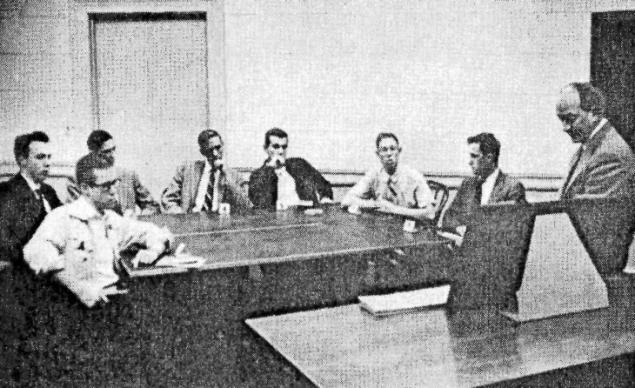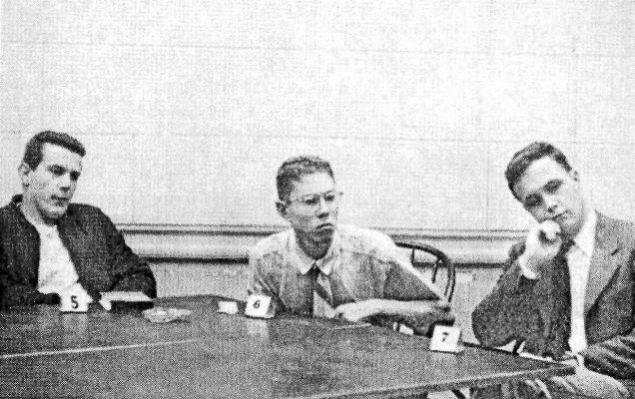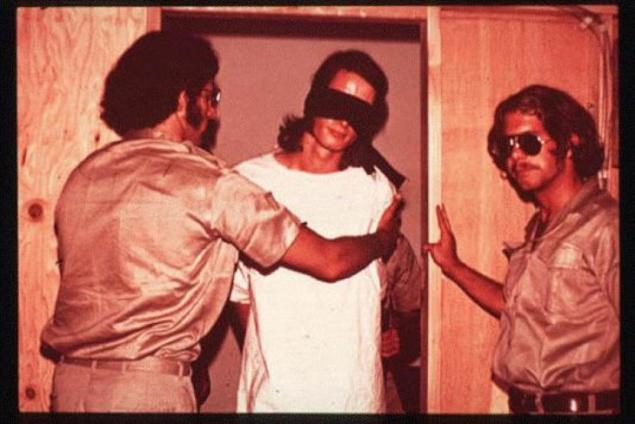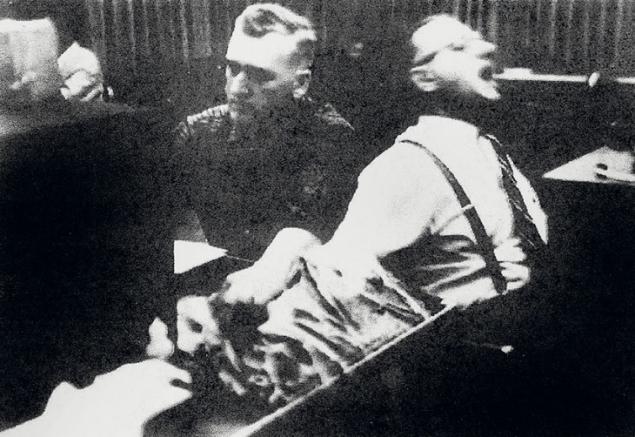952
5 shocking psychological experiments on people
The site says, you can post as many seals and sentimental sigh of examples of human kindness, but in the depths of each of us lurks a beast. Although this fact civilization hide even from ourselves, some experiments included in the history of psychology, we proved that "humanism" - this is too conventional concept ... 1. Asch conformity experiments, 1951 g of. H2> student volunteers were invited to check the alleged vision. The subject was in the group with seven actors, whose results are not taken into account when summing up.
People are highly dependent on the opinions of a group in which there are. Even if it is contrary to common sense or our beliefs, it does not mean that we can resist him. h4> Young people have shown a card on which was depicted a vertical line. Then they were shown another card, where it was shown three lines - the participants were asked to determine which of them corresponds to the size of the line on the first card. Opinions of the test asked at the last turn.
What does this say about us? h3> Users are strongly dependent on the opinions of a group in which there are. Even if it is contrary to common sense or our beliefs, it does not mean that we can resist him. As long as there is at least a ghostly threat of condemnation from others, we can be much easier to drown out your inner voice than to defend its position.
2. Experiment with the "good Samaritan" 1973 g of. H2> The Parable of the Good Samaritan tells of how free the traveler on the road helped the wounded and robbed man passed by all the others.
We can with surprising ease to abandon religion or any other ethical imperatives that is advantageous for us. h4> On the way from one building to another, students met on an empty alley lying on the ground a man who looked as if he needed help.
What does this say about us? h3> We can with surprising ease to abandon religion or any other ethical imperatives when it is profitable to us. People tend to justify their indifference by the words "this does not concern me," "I still can not help anything," or "here will cope without me».
3. Experiment indifferent witness, 1968 g of. H2> In 1964, the criminal attack on the woman, who repeated twice within an hour, ended with her death on the way to the hospital. Witnesses of Crime has become more than a dozen people, and yet no one bothered to call the police. On the motives of these events, John Darley and Bib Lateyn decided to conduct its own psychological experiment.
The crowd can be indifferent to the suffering of others, especially when in a difficult situation get people from marginalized groups. h4> They invited volunteers to participate in the discussion. Participants were asked to communicate remotely - using communication devices. During the conversation, one of the interlocutors feigned an epileptic seizure, which could be clearly recognized by the sounds of the speakers.
What does this say about us? h3> If you think that a large number of people around ensures your safety - it is not so. The crowd can be indifferent to the suffering of others, especially when in a difficult situation get people from marginalized groups. While there are a number someone else, we are happy to pass on the responsibility for what happens.
4. Stanford Prison Experiment, 1971 g of. H2> The psychologist Philip Zimbardo at Stanford University basement equipped as a prison and asked male volunteers to those examples on the roles of guards and prisoners - all of them were college students.
People quickly accept imposed their social roles and is so keen on his own authority that face of what is permitted in relation to other erased them rapidly fast. h4> sadistic shown every third guard - over abused prisoners, some were forced to wash the drain barrels with his bare hands. Two of them were so mentally scarred that they had to be excluded from the experiment. One of the new members, replacing the retired, was so shocked by what he saw that soon declared a hunger strike. In retaliation, he was placed in a tight closet - solitary confinement. Another prisoner was given a choice: give up the troublemaker blankets or leave alone in the night. His comfort agreed to donate only one person.
What does this say about us? h3> People quickly accept social roles imposed on them and are so keen on his own authority, that the line of what is permitted in relation to the other they quickly erased quickly. Stanford experiment, participants were not sadists, they were the most ordinary people. Higher education and a strong mental health did not prevent subjects to use violence to the people over whom they have authority.
5. Milgram experiment, 1961 g of. H2> psychologist Stanley Milgram decided to see how far people can go in harm to others, if it is part of their duties.
Most of the subjects were ready to pass through the stranger lethal electric shocks only due to the fact that close was a man in a white robe who told them to do it. h4> If the "teacher" hesitated when sentencing, the experimenter whose persistence increases with doubts, with the help of specially harvested phrases to convince him to continue. Upon reaching the 300 volts from the room "disciples" were heard clearly hitting the wall, then "disciple" stopped to answer questions. Silence for 10 seconds, the experimenter interpreted as a wrong answer, and he asked to increase the power of impact. The following discharge 315 volts even more insistent repeated blows, after which the "student" ceased to respond to questions. The experiment was considered complete when the "teacher" three applied the maximum possible punishment.
What does this say about us? h3> Even as strongly suppressed, contrary to all the experts, the vast majority of subjects were willing to spend over a stranger lethal electric shocks only due to the fact that close was a man in a white coat who I told them to do it. Most people are surprisingly easy to go on about the authorities, even if this entails a devastating and tragic consequences.


































